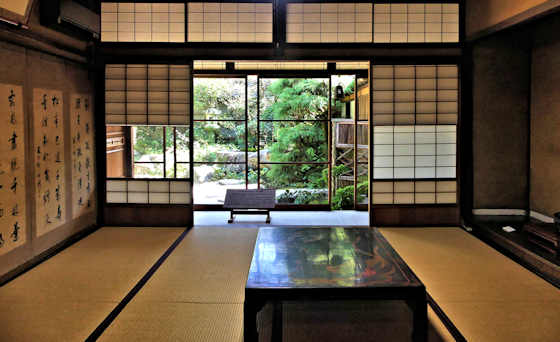Thursday, August 26, 2021
Itohara Residence
Adjacent to the house is the Itohara Memorial Museum that has many displays about the historical production of iron, but also family heirlooms like weapons, armour, tea ceremony utensils, clothing etc.
The closest station is Yokota on the JR Kisuki Line, accessible using the Orochi Tourist Train.
Labels:
Architecture,
okuizumo,
samurai,
Shimane
Tuesday, August 24, 2021
Akiraokisan Komyo-ji Temple 59 on the Kyushu Pilgrimage
There is a miniature Shikoku Pilgrimage within one courtyard with the 88 statues and "sand" from each temple.
Saturday, August 21, 2021
Meiseki-ji Temple 43 Shikoku Pilgrimage
eriod.
The temple belongs to the Tendai sect and the honzon is a senju Kannon.
Labels:
ehime,
henro,
sacred tree,
shimenawa,
tendai
Thursday, August 19, 2021
Miyama Tenmangu
Monday, August 16, 2021
North into Fukuoka
Sunday, August 15, 2021
It has stopped raining, but........
I was woken by a knock at the door just after 5 this morning. It was two old guys from the emergency services telling me that the village would be cut off by floodwater later in the morning and did I have enough food. When I took these pics an hour ago the water was still rising.
I used to have a garden down by the river, and it used to flood every two or three years. The last one, 4 years ago put the garden under at least 20 feet of water and devastated it so I gave up on it. My other garden, in the village, the 3rd photo, is now flooded. Not sure how much damage it will cause..... depends how quickly the water goes down....
Our house is several meters higher than the garden and we would be one of the last houses to be flooded were the water to rise much further. My worry is it is next to a steep mountain, part of which is planted in sugi, so a flood is much less likely than a landslide.
The water may rise a few more inches, but I am assured, by those who are releasing the water from the dam, that it will start going down soon
Friday, August 13, 2021
Yakumo Honjin
Yakumo Honjin
The main building dates back to 1733, however, the property is now huge as several other Edo Period buildings that belonged to high-ranking vassals of the lord in Matsue have been reassembled here.
Labels:
Architecture,
honjin,
Izumo,
shinji
Wednesday, August 11, 2021
Juraku-ji Revisited
Jurakuji
Juraku-ji is temple number 7 on the Shikoku 88 temple pilgrimage. I visited when I walked that pilgrimage but this time I am walking the Shikoku Fudo Myo Pilgrimage, and although this temple is not part of that pilgrimage, the first day and a half of the Fudo Pilgrimage roughly follows thye same route so I stopped in at any temples I passed.
Like the previous temple, Anrakuji, Jurakuji has a Chinese-style gate. There is nothing special in any of the other architecture which is all relativeky modern.
Labels:
Fudo Myojin,
henro,
jizo,
shikoku fudo,
tokushima
Monday, August 9, 2021
Kubota Residence Gardens
four posts on the Kikuya Residence and gardens....
Subscribe to:
Posts (Atom)

































































